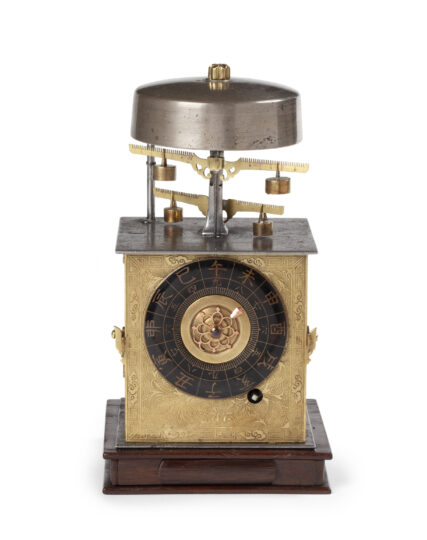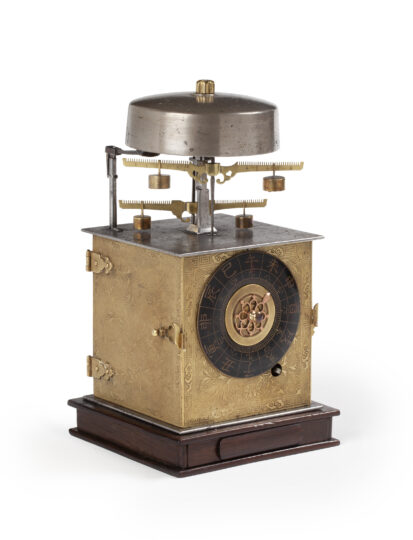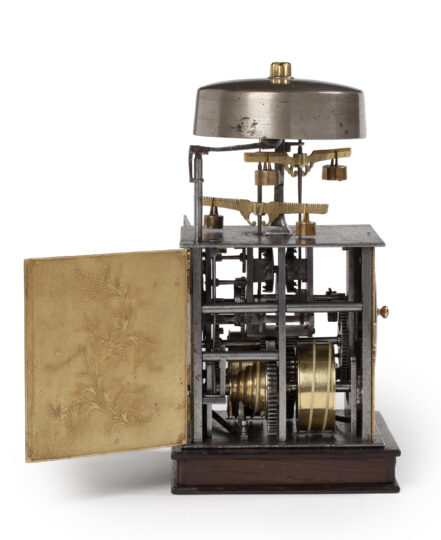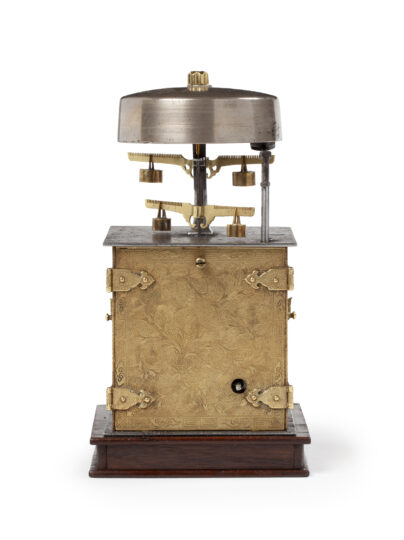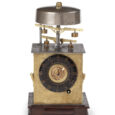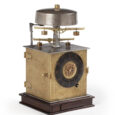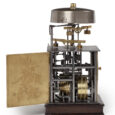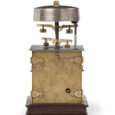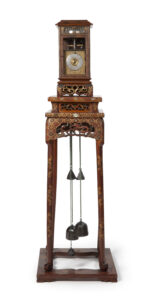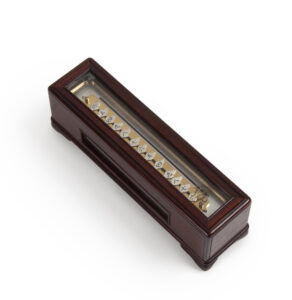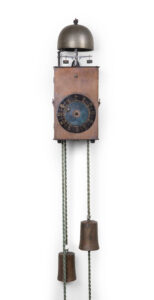JAPANESE TABLE LANTERN CLOCK ‘YAGURA DOKEI’ WITH STRIKING Ca. 1780
M&R277
JAPANESE TABLE LANTERN CLOCK ‘YAGURA DOKEI’
WITH STRIKING
Circa 1780
Japan
Movement
The spring-driven chain fusee movement is situated in a beautifully engraved housing and consists of ging and striking trains. The going train has verge escapement and a silksuspended balance. The going train has a double verge escapement, one for the day and the other for the night, switching automatically. The time keeping is adjusted by moving small weights, which are suspended in notches on the foliots, closer or further away from the centre. The striking train is regulated by a countwheel and indicates the hours and half hours. It starts with 9 and runs back to 4, while the half hour is indicated by one and two strokes alternatingly. The movement also has a spring-driven alarm set by a pin in a central alarm disc behind the hand. The going train is wound at the front, the striking train at the back.
Dial
The dial has a black painted chapter ring with Chinese zodiac symbols and Japanese numerals for the indication of the time by an elaborately pierced brass hand.
Case
The movement’s case is made of brass. All sides are finely engraved depicting chrysanthemum, leaf and scroll motifs. It is surmounted by a double foliot and a substantial bell. The steel movement is constructed between bars, enclosed by brass top and bottom plates. The brass case is placed on a Japanese walnut base with a small drawer for the winding key. The front can also be slid up to give access to the dial and adjust the hour chapters.
Duration 24 hours
Height 18.5 cm.
Width 10 cm.
Depth 10 cm.
Literature
– N.H.N. Mody, Japanese clocks, Rutland, 1967.
– W. Brandes, Alte Japanische Uhren. Braunschweig, 1976.
– Tardy 3-parts, La Pendule Francaise JAPON, p. 757-768.
Japanese timekeeping
The Japanese timekeeping was very different from timekeeping in the western world. Instead of the hour as a fixed value the length of an hour in Japan, toki in Japanese, varies according to the length of day and night. Both day and night are divided into 6 toki, spread over the period from sunrise to sunset and from sunset to sunrise. In summer the days are longer than the nights and therefore a toki during the day in longer than one during the night. In winter this is the other way around. For this reason Japanese clocks have chapter rings with movable chapters, so that de length of the toki can be modified. There are also clocks with a fixed chapter ring. In this case the clock’s beat rate changes by moving the weights on the foliot to slow down or accelerate the clock. This we mainly see in older clocks.
The numerals on the clocks run from 9 to 4 (The numbers 1-3 were not used for religious reasons). The only numeral that is fixed is 9 o’clock, our 12 noon. The count ran backwards because the earliest Japanese artificial timekeepers used the burning of incense to count down the time. Dawn and dusk were therefore both marked as the sixth hour in the Japanese timekeeping system. Each toki, 12 in total, also had its own sign of the zodiac which are depicted on the chapter ring, around the hour numerals.

